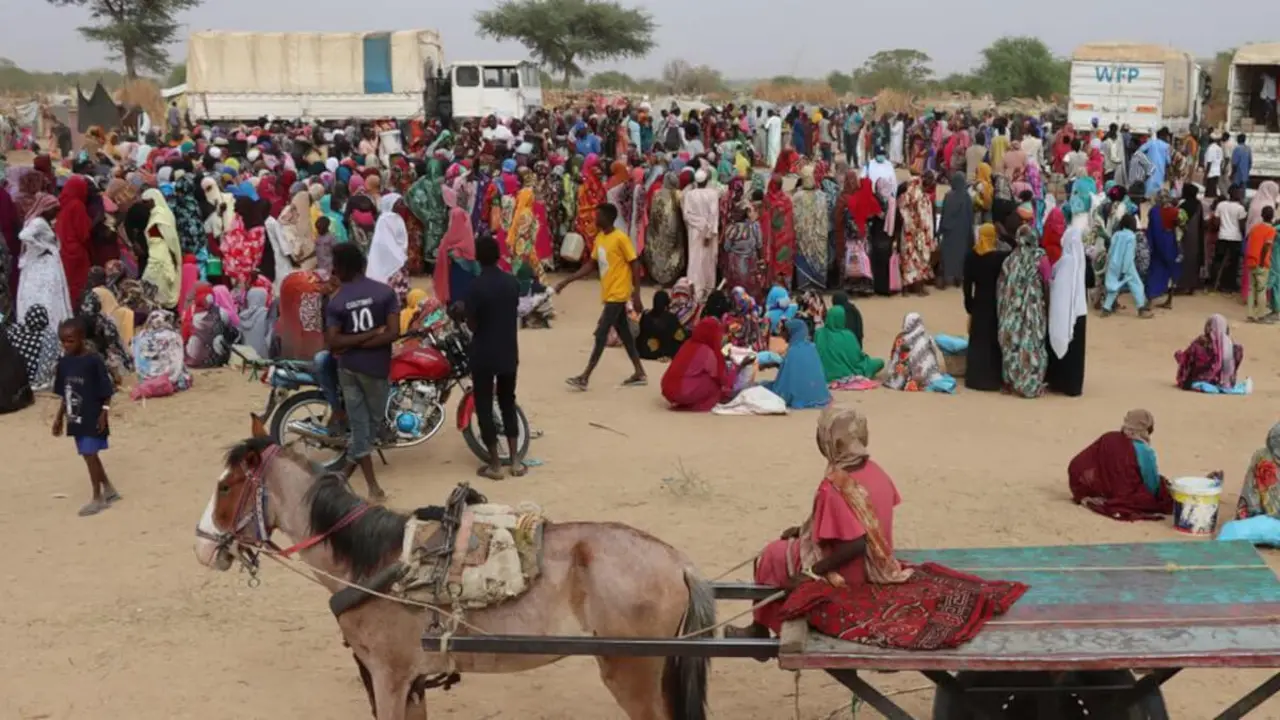Universal access to health care would end the "avoidable tragedy" of infant and child mortality

In 2021, some five million children died before their fifth birthday and a further 2.1 million children and young people aged five to 24 died from medical causes that could have been prevented with equitable access to health services and the provision of higher quality maternal, newborn, adolescent and child health care, according to the latest estimates in a report by the UN Inter-agency Group for Child Mortality Estimation*.
A second report by the same organisation revealed that, in addition, 1.9 million babies were stillborn during the same period.
"Every day, too many parents face the trauma of losing their children, sometimes before they draw their first breath," said Vidhya Ganesh, Director of the Division of Data Analysis, Planning and Monitoring at the United Nations Children's Fund (UNICEF).
"Such a widespread and preventable tragedy should never be accepted as inevitable. Progress is possible with stronger political will and targeted investment in equitable access to primary health care for every woman and child."
Access to and availability of quality health care remains a matter of life and death for children around the world, the group says.
Most child deaths occur before the age of five, and half in the first month of life. For these babies, premature birth and complications during childbirth are the leading causes of death.
Similarly, more than 40% of stillbirths occur during childbirth, although most are preventable when women have access to care during pregnancy and childbirth.
For children who survive beyond their first 28 days of life, infectious diseases such as pneumonia, diarrhoea and malaria are the greatest threat.
The reports also show how increased investments in strengthening primary health systems have benefited women, children and young people.
The global under-five mortality rate has halved since 2000, while mortality rates for older children and young people fell by 36% and the stillbirth rate declined by 35%.
However, progress has slowed significantly since 2010, and 54 countries will miss the Sustainable Development Goal target for under-five mortality.
This target aims to end preventable newborn and under-five deaths by 2030. It also includes reducing neonatal mortality to a minimum of 12 per 1000 live births, and under-five mortality to a minimum of 25 per 1000 live births.

The reports warn that unless swift action is taken to improve health services, nearly 59 million children and young people will die before the end of the decade, and nearly 16 million stillbirths are likely.
"It is grossly unfair that a child's chances of survival can depend only on where they are born, and that there are such huge inequities in their access to life-saving health services," said Anshu Banerjee, director of Maternal, Newborn, Child and Adolescent Health and Ageing at the World Health Organization.
Even today, the chances of child survival still differ widely depending on where children are born, with sub-Saharan Africa and Southeast Asia bearing the heaviest burden.
Although sub-Saharan Africa accounted for only 29% of the world's live births, the region was responsible for 56% of all under-five deaths in 2021, while South-East Asia accounted for 26%.
Children born in sub-Saharan Africa also have the world's highest risk of infant death, 15 times higher than those in Europe and North America.
Meanwhile, mothers in sub-Saharan Africa and Southeast Asia are experiencing the painful loss of stillbirth at an exceptional rate.
In 2021, 77% of all stillbirths occurred in these regions, with almost half of all stillbirths occurring in sub-Saharan Africa. The risk of a woman having a stillbirth there is seven times more likely than in Europe and North America.
"Behind these figures are millions of children and families denied their basic right to health," said Juan Pablo Uribe, Global Director for Health, Nutrition and Population at the World Bank, and Director of the Global Financing Facility.
"We need political will and leadership for sustained financing for primary health care, which is one of the best investments countries and development partners can make," he added.
Although the COVID-19 pandemic has not directly increased child mortality, it may have increased future risks to their long-term survival, according to reports.
Disruptions in vaccination campaigns, nutrition services and access to primary health care will jeopardise children's health and well-being for many years to come.
In addition, the pandemic has also led to the largest sustained decline in immunisation in three decades, putting the most vulnerable newborns and children at greater risk of dying from preventable diseases.
John Wilmoth, Director of the Population Division of the UN Department of Economic and Social Affairs, said that despite remarkable progress since 2000 in reducing under-five mortality, much remains to be done.
"Only by improving access to quality health care, especially at birth, can we reduce these inequalities and end preventable newborn and child deaths around the world," he said.
*The United Nations Intergovernmental Group of Experts on Child Mortality was established in 2004 to share data on child mortality and report on global progress towards child survival goals, among other objectives.
The group is led by the United Nations Children's Fund (UNICEF) and includes the World Health Organization (WHO), the World Bank Group and the Population Division of the United Nations Department of Economic and Social Affairs (DESA).








